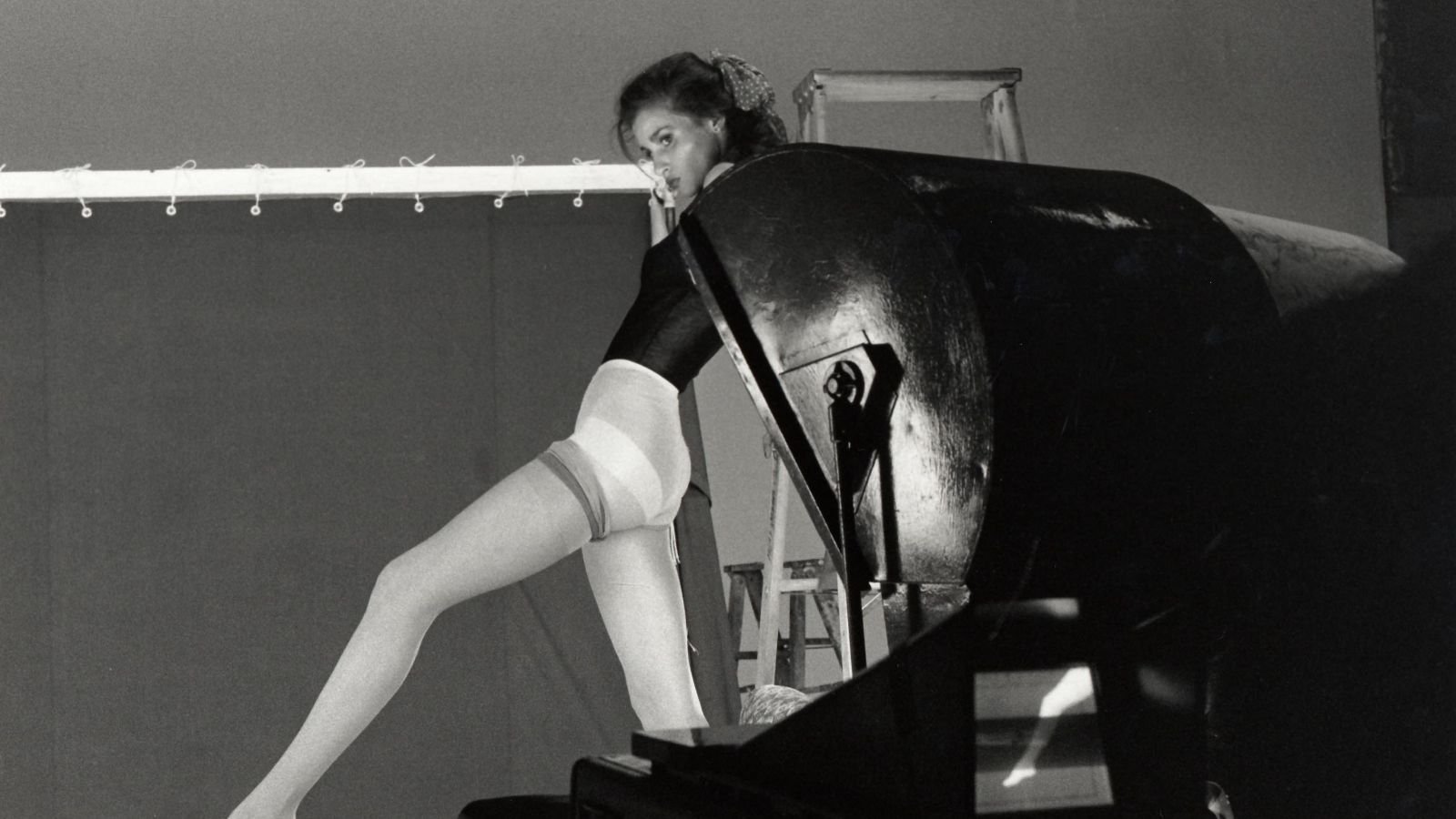
Fashion Records
Ed Barber
On the face of it, the fashion industry offers a rich subject for documentaries – excellent raw material. An environment inhabited by highly focussed and energetic people, driven by an obsession with image, style and the look of things. A global community, in fact, with an amazing ability to promote itself. Fashion events are always full of cameras.
As usual, documentary photographers have not been slow to see the visual possibilities of studying such a world. The photographer and filmmaker William Klein has been a relentless follower of fashion action for decades and the renowned image-maker Martin Parr has also applied his inimitable signature style to fashion subjects, producing characteristically colourful results.
The documentary mode – thanks to digital technologies – has been democratised in recent years and one could be forgiven for anticipating a mountain of insightful and revealing films. Our screens are full of fly-on-the-wall, covertly filmed, CCTV observed, mobile phone snapped, wobbly hand-held material purporting to be documentary or pseudo documentary or docu-soap or digital diaries. However, all that activity and the proliferation of images have not produced many coherent or revealing films about the world of fashion.
Of course, there have been one or two notable exceptions. The Wim Wenders 1989 collaboration with Yohji Yamamoto, Notebook on Cities and Clothes, stands as an insightful trip into the world of a fashion design icon. It is also an extraordinarily contemplative piece. Wenders skillfully uses his voice-over to draw our attention to details, including his preferences for certain movie cameras. Ultimately, it is both about fashion and about filmmaking, with Tokyo and Paris as urban backdrops.
In 1995, the designer Isaac Mizrahi allowed himself to be the subject of Douglas Keeve’s documentary Unzipped. The film was shot and edited in a highly respectful and sensitive way, capturing the tone and texture of a life in fashion – the man at work, at home and socialising. An unsurprising yet highly engaging observation of one man’s fashion world. It presented us with “old school” documentary values rather than the Nick Broomfield on-the-hoof documentary maker from the provocateur school of filmmaking. Keeve collaborated with Mizrahi again in 2005 to produce Seamless, a film looking at what it takes for young designers to make it in the fashion world.
When the legendary filmmaker Robert Altman weaved a web of fashionista stories in his feature Pret-a- Porter (1994) he navigated an alien world. Fascinating viewing, sending up the fashion “types”, it only narrowly misses being a cheap shot at a world that really is an easy target.
For Fashion Records, then, the challenge was to identify films that would each bring something exceptional to the screen, something more than just a biopic of a designer or scenes of global fashionistas at large. I preferred to look into films that had been overlooked, forgotten or were difficult to access, in other words, not the documentary equivalent of Ben Stiller’s Zoolander (2001)!
Consequently, Fashion Records presents a carefully balanced coupling of two films, Frederick Wiseman’s Model (1980) and Bruce Weber’s Chop Suey (2001). The former represents an outsider view that is even-handed, the latter stands for an insider perspective that is much more than just navel gazing and indulgent. Both are rarely seen films – set twenty years apart – that, using entirely different visual means, adopt the documentary mode to explore the fashion world. One applies the cool, understated view of the documentary observer, whilst the other takes us on an intense personal odyssey, an obsessive journey, seen through the eyes of one of the world’s most famous fashion image-makers.
Quietly, Wiseman’s Model examines the intersection of fashion, business, advertising, photography, television and fantasy. The models are shown at work with photographers, art directors and filmmakers. Wiseman’s film presents a calm, and seemingly effortless navigation through the working lives of models at this New York agency. The closely observed scenarios coupled with the uncluttered ambient soundtrack make for a seductive combination.
Writing about Model at the time of its release in The Times Literary Supplement, Mary Frazier observed: “We have all the fascination of looking into another world and none of the annoyance of being told what to think about it…his camera, like the eye, is not merely passive. It has the power to focus on something particular, to observe it and to be the means of our intelligence about it.” Two decades later, Bruce Weber’s Chop Suey (2001) takes an altogether more intimate and elliptical look at fashion and photography. Part self-portrait, part documentary, the film is based on Weber’s discovery of a young male model. We see his transformation from a handsome teenage boy into a homoerotic icon; Weber’s camera views his protégé affectionately and knowingly. Around this he creates an autobiographical and reflective mix that covers his own photography, filmmaking and his private collection of classic photographic prints. As the title suggests, the ingredients form a complex collage of images, ideas, reflections, personages and film material. A homage to some of Weber’s favourite things, Chop Suey provides Weber’s voice-over to guide us through a cast of characters including fashion-guru Diana Vreeland, Robert Mitchum and the singer Frances Faye. This is free-form filmmaking, unpredictable, startling and exciting.
© Ed Barber 2006